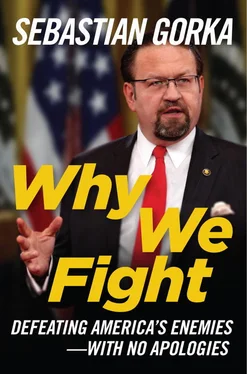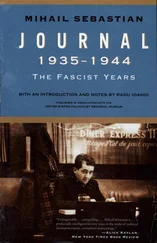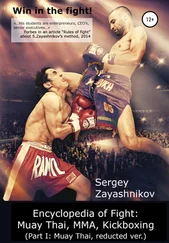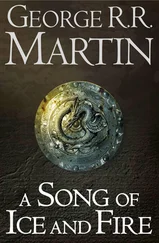Phase Four: Propaganda and information operations targeting the civilian population to increase discontent amplified by the arrival of Russian-sponsored and trained bands of militants, escalating subversion.
Phase Five: Military measures below open war , including the establishment of no-fly zones, blockades, extensive use of unconventional war units and direct action in close cooperation with armed “opposition” units.
Phase Six: Open use of force . The commencement of military action, immediately preceded by large-scale reconnaissance and sabotage missions. Employment of all means of attack and all types of assets, kinetic and non-kinetic, including special forces, space capabilities, electronic warfare, aggressive and subversive diplomacy, intelligence assets, industrial espionage, allied force-multipliers, and embedded fifth-column actors.
Phase Seven: Force escalation . The intensification of targeted information operations, increased electronic warfare, air operations, and harassment, combined with the use of precision weapons launched from multiple platforms, including long-range artillery and the use of weapons platforms based on new physical principles such as microwaves, radiation, and non-lethal biological weapons targeting the enemy’s will to resist.
Phase Eight: Assert control . Roll over and neutralize all remaining resistance, use special forces and stand-off platforms to destroy remaining combat-effective enemy units, deploy airborne assets to surround the last points of resistance, and execute “mop-up” and territorial control operations with ground forces.
None of these measures constitutes a new type of war. It is the focus and combination of modes of attack that have changed. Moving away from the Cold War scenario of all-out war—including the deployment of chemical, biological, and nuclear weapons—and maskirovka (deception) and making indirect and non-kinetic conflict a priority, the Kremlin has adapted Sun Tzu to our time. The perfect victory is to win without fighting too much .
The Russians will continue to employ subterfuge, subversion, and indirect attack. Russia does not share America’s interests. It may face its own jihadi threat, especially from Chechnya, but that does not mean it is, or can be, our friend. Vladimir Putin built his career in the KGB on denying the God-given rights of his fellow man and undermining the national security of America. That is why he has publicly lamented the loss of the Soviet Union as a tragedy. Not the gulag. Not the forced starvation of millions of kulak farmers. Not the torture of thousands in the bowels of the KBG headquarters of the Lubyanka. No, not that, but the loss of the system that was responsible for all that death and suffering—that was the tragedy for the King of the Kremlin.
Russia is not our friend. We need to know it and prepare to neutralize it when it endangers our vital interests. But there is another foe we face, and unlike Russia, it is rising in power. It intends to undermine us and replace us as a global force for good.
Let us now look at China.
THE NEW SUN TZUS: “MAKING TROUBLE FOR THE TROUBLEMAKERS”
Shortly before 9/11, two senior colonels of the Chinese People’s Liberation Army, Qiao Liang and Wang Xiangsui, men with experience in political warfare, published Unrestricted Warfare , an argument that drastic changes in the context of conflict require a “new” type of war without limits.
Qiao and Wang focus first on the geostrategic and geopolitical changes that necessitate unrestricted warfare, discussing globalization, the waning power of the classic nation-state, and the rise of “super-empowered” actors such as hackers and cyber warriors. The authors offer a lengthy discourse on the significance of the First Gulf War in demonstrating the new “omnidirectionality” of combat and enumerate the eight principles of unrestricted warfare:
• Omnidirectionality : A 360-degree perspective guaranteeing consideration of all the factors related to war. The goal is to eliminate blind spots when observing the battlefield, designing plans, and employing measures. Warfare can be military, quasi-military, or non-military, and the “battlefield” exists everywhere with no distinction made between combatants and non-combatants.
• Synchrony : Conducting actions in different locations at the same time. Synchrony accomplishes objectives rapidly and simultaneously.
• Limited objectives : Limit objectives in relation to measures employed. Objectives must always be smaller than the measures used to obtain them.
• Unlimited measures : Once objectives are limited, there should be no restrictions placed on the measures used to achieve them. Hence “unrestricted warfare.”
• Asymmetry : Understanding and employing the principle of asymmetry correctly so as to find and exploit an enemy’s weaknesses.
• Minimal consumption : Using the fewest combat resources necessary to accomplish the objective. The analogous principle in the US military is “economy of force.”
• Multidimensional coordination : Coordinating and allocating all forces that can be mobilized in the military and non-military spheres covering an objective, including non-military assets such as cultural warfare.
• Holistic adjustment and control of the entire war process : Continual acquisition of information throughout the campaign to allow for iterative adjustment and comprehensive control.
As even a cursory glance will demonstrate, none of these principles are at all new. Several are as old as The Art of War itself. Others are simply common sense. Nevertheless, we shouldn’t disregard this work, or rather, we shouldn’t conclude that there is nothing new in Chinese thinking about war, the exercise of power, and how it can oppose American interests.
Every nation—and even every non-state actor—has its unique strategic culture. China’s has been shaped primarily by its experiences in two quite different epochs: the original period of the Warring States, which produced Sun Tzu, and the nineteenth and early twentieth centuries. The former epoch left China’s generals and leaders with an obsessive concern for maintaining internal cohesion. The latter left the political elite determined that China should never again be exploited and humiliated by foreign, especially Western, powers as it was for so long in the modern age.
What, then, are China’s strategic goals? Qiao and Wang may not have expounded a revolutionary new doctrine of war for their nation, but Beijing is most definitely practicing a shrewd form of irregular warfare, less aggressive, perhaps, than Russia’s in that its primary purpose is not subversion, but intimidation and economic control.
Simply looking at China’s actions in Latin America and South Asia, where it has “invested” billions in countries like Venezuela and Afghanistan for access to natural resources such as oil and copper, we see how China uses the non-kinetic to realize its national goals. The privatization and cooption of the state that China has perpetrated in, such African countries as Angola and Nigeria, show how global an actor China has become in recent years. Russia subverts and buys individual actors. China buys the good will of whole governments in ways that are reminiscent of the mercantilism of the West a couple of centuries ago. In short, Beijing’s approach is to exploit weak nations and corrupt regimes as well as the weaknesses of strong nations. As for the strongest of its competitors, the United States, Qiao Liang, told an interviewer in 2012, when he was already a general, that the goal is “to make trouble for the troublemaker.”
Читать дальше












